EXPGUI Tutorial: Garnet (part 7)
7. Define constraints
The next step in the refinement is to vary atomic positions, displacement
(thermal amplitude) parameters and since two sites are
shared in this material, site occupancies. It is almost never possible to
refine different displacement parameters or position parameters for
two atoms that share a site, so one must use constraints to require that
coordinates and thermal parameters be grouped. With only a single data set
it is only possible to refine a single occupancy value for a site, so it is
also necessary to constrain the site occupancies to they add to 1.
For this example, we need to constrain the pairs of atoms that share a site,
Fe2/Al3 and Al4/Fe5.
This can be done using the constraints pane. In this case, both atoms are
on special positions so the coordinates are fixed by symmetry and do
not need to be constrained. This, however,
will be ignored to illustrate how coordinates are constrained.
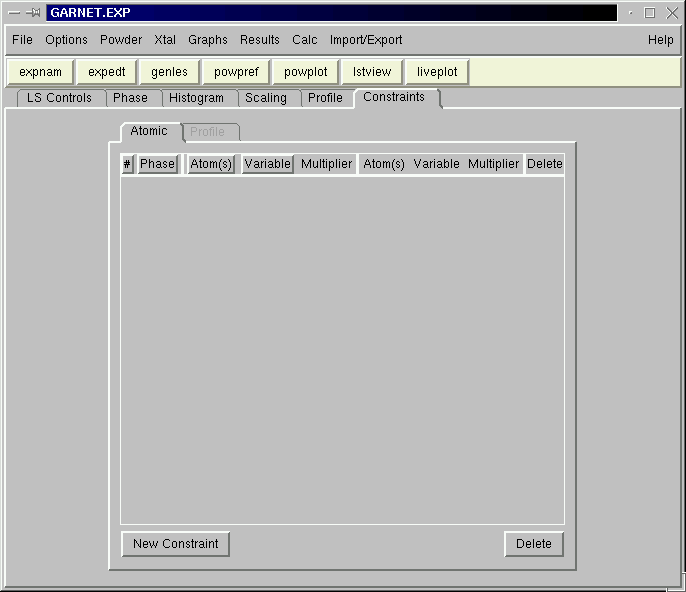
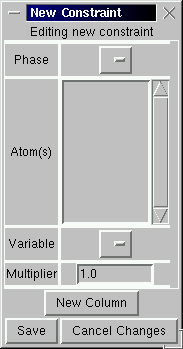
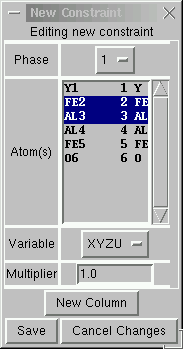 Pressing the "New Constraint" button causes the box to the left to appear.
Select phase 1 at the top, the atoms Fe2 and Al3 by "dragging"
over them with the mouse (clicking with the mouse while holding the
control key also works). Select the "XYZU" variable to group x, y, z and Uiso
for the selected atoms, as shown to the right. Press "Save" and the four
constraints are generated and appear on the Constraints pane.
Pressing the "New Constraint" button causes the box to the left to appear.
Select phase 1 at the top, the atoms Fe2 and Al3 by "dragging"
over them with the mouse (clicking with the mouse while holding the
control key also works). Select the "XYZU" variable to group x, y, z and Uiso
for the selected atoms, as shown to the right. Press "Save" and the four
constraints are generated and appear on the Constraints pane.
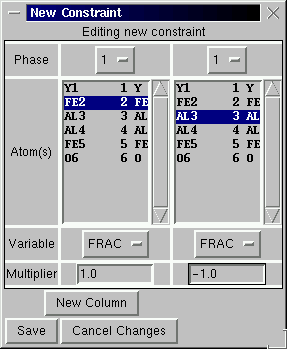 To constrain the fractional occupancies, again press the "New Constraint"
button and then press the "New Column" button, to create a second
constraint box. Select phase 1 for both boxes, Fe2 in one box and Al3
in the other variable "Frac" in the left-most box. Use
any values for the multiplier that are equal in magnitude
but opposite in sign.
Press "Save" and this constraint is also generated and it appears on the
Constraints pane, as is shown below.
To constrain the fractional occupancies, again press the "New Constraint"
button and then press the "New Column" button, to create a second
constraint box. Select phase 1 for both boxes, Fe2 in one box and Al3
in the other variable "Frac" in the left-most box. Use
any values for the multiplier that are equal in magnitude
but opposite in sign.
Press "Save" and this constraint is also generated and it appears on the
Constraints pane, as is shown below.
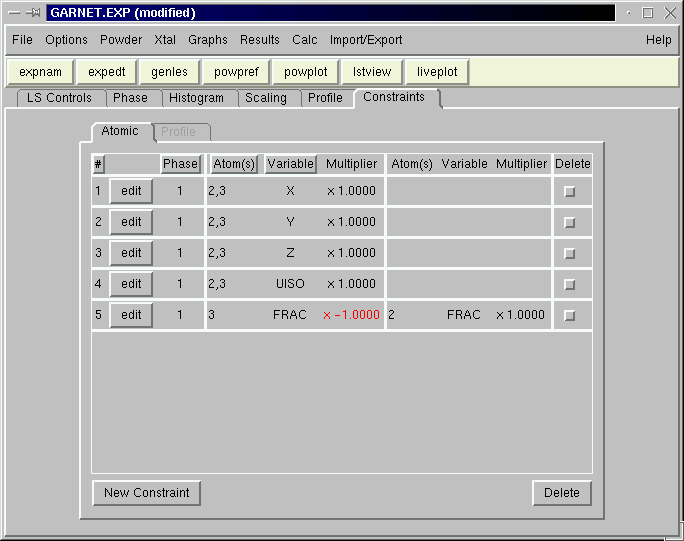
The previous two steps are then repeated for Al4 and Fe5, to generate an
additional five more constraints, as is shown below.
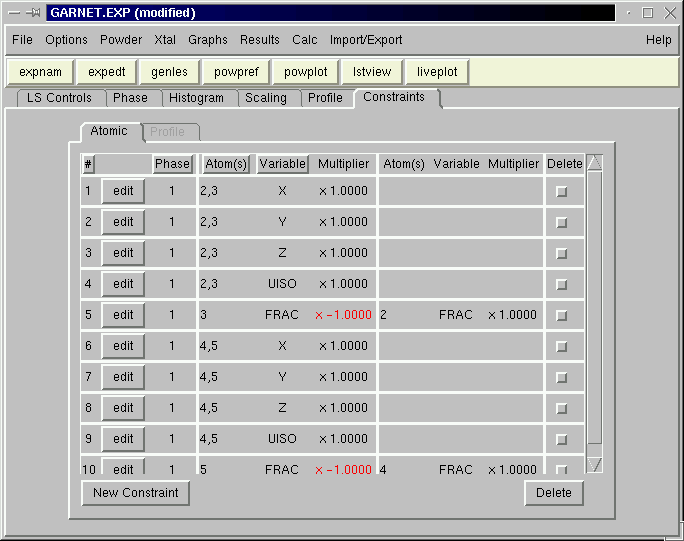
(.EXP Snapshot:
garnet7.exp
)
Previous step:
Additional Least-Squares Refinement
Next step:
Vary atomic parameters




Pressing the "New Constraint" button causes the box to the left to appear. Select phase 1 at the top, the atoms Fe2 and Al3 by "dragging" over them with the mouse (clicking with the mouse while holding the control key also works). Select the "XYZU" variable to group x, y, z and Uiso for the selected atoms, as shown to the right. Press "Save" and the four constraints are generated and appear on the Constraints pane.
To constrain the fractional occupancies, again press the "New Constraint" button and then press the "New Column" button, to create a second constraint box. Select phase 1 for both boxes, Fe2 in one box and Al3 in the other variable "Frac" in the left-most box. Use any values for the multiplier that are equal in magnitude but opposite in sign. Press "Save" and this constraint is also generated and it appears on the Constraints pane, as is shown below.

